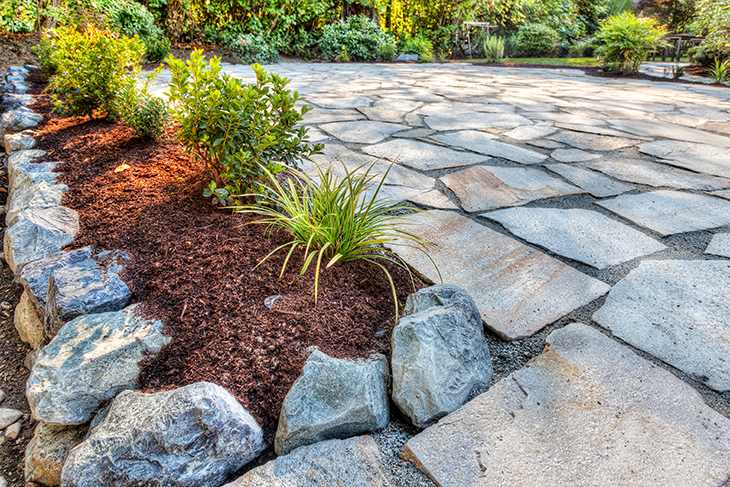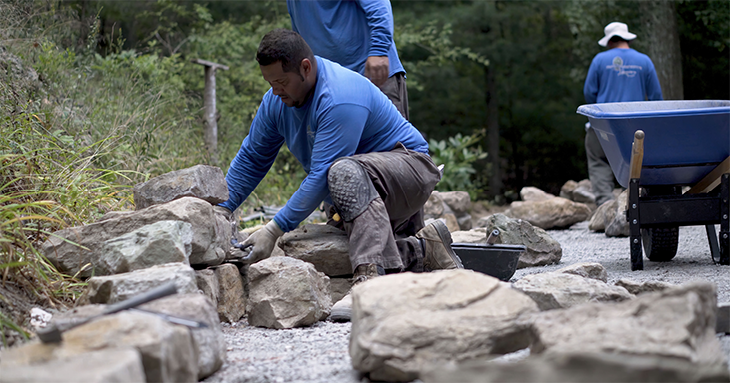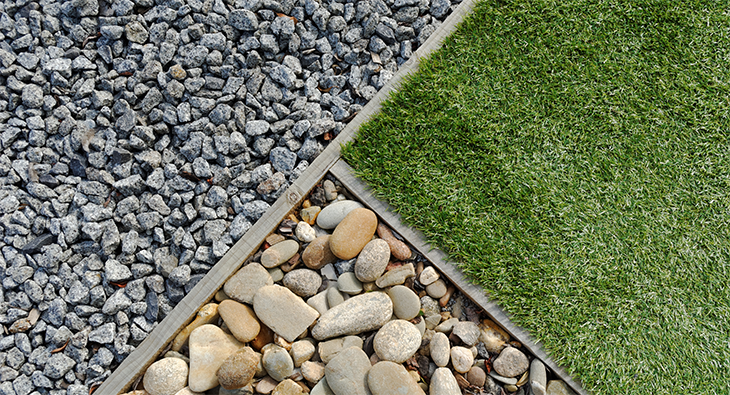
How to Better Landscape Your Yard with Landscape Rock Removal
Landscaping rocks can add texture, color, and dimension to your yard. But sometimes, they can be a nuisance. Perhaps you're tired of tripping over them, or they're making it difficult to plant new flowers or trees. Whatever the reason, you're ready to remove them. In this article, we'll discuss the best methods and equipment for landscaping rock removal, and what you can do with all those rocks once they're gone.
The Easiest Way to Get Rid of Rocks in Your Yard
The easiest way to get rid of small landscaping rocks is to rake them up by hand. A good rake for this job is one that has closely spaced tines, like a garden rake or leaf rake. You can also use a hoe or a shovel to help scoop up the rocks. However, this method can be time-consuming and labor-intensive, especially if you have a large yard with lots of rocks.
For larger rocks, you may need to use heavy equipment to remove them. In some cases, you may even need to hire a professional landscaping company to do the job for you. We'll discuss equipment options in the next section.

The Best Way to Get Rid of Rocks
The best way to get rid of rocks depends on the size of the rocks and how many you need to remove. If you have small landscaping rocks, hand raking is the most efficient method. For larger rocks, you may need to use equipment like a skid steer loader or an excavator to dig them out. A professional landscaping company will have access to this equipment and can remove the rocks quickly and safely.
For those who are the DIY type:
You can book your own dumpster rental and have the dumpster rental service haul it away. A 4 or 6 yard dumpster rental is ideal for clearing landscaping rocks as it provides enough space to dispose of the rocks, and will be able to handle the weight of the rocks. Choosing a dumpster rental service minimizing the effort and time required for disposal if you're removing them yourself. This in turn, will save you quite a bit of money.
How to Remove a Large Rock from the Ground
Removing a large rock from the ground can be challenging, but it's not impossible. The first step is to excavate around the rock to expose as much of it as possible. You may need to use a shovel or a pickaxe to loosen the soil around the rock.
Once you have a clear view of the rock, you can try to lift it out using a crowbar or a pry bar. Be sure to wear gloves and eye protection when attempting this, as the rock could shift unexpectedly and cause injury.
If the rock is too heavy to lift out by hand, you may need to use heavy equipment like an excavator or a skid steer loader. A professional landscaping company will have access to this equipment and can remove the rock safely and efficiently.

Equipment for Landscaping Rock Removal
There are several pieces of equipment you can use for landscaping rock removal, depending on the size and amount of rocks you need to remove. Here are some options:
- Rake: A garden rake or leaf rake can be used to rake up small landscaping rocks by hand.
- Hoe: A hoe can help you scoop up rocks and loosen soil around larger rocks.
- Shovel: A shovel can be used to dig around and remove larger rocks.
- Skid steer loader: A skid steer loader is a versatile piece of equipment that can be used to move rocks, soil, and other materials. It's especially useful for removing large landscaping rocks.
- Excavator: An excavator is a heavy-duty machine that can be used to dig and remove rocks and soil. It's ideal for removing large boulders and rocks.
- Rock picker: A rock picker is a specialized machine that's designed to pick up rocks and debris from soil. It's commonly used in agricultural settings, but can be used for landscaping rock removal as well.

Is There a Machine that Picks Up Rocks?
The short answer:
Yes, there is a machine that picks up rocks!
It's called a rock picker, and it's designed specifically for picking up rocks and debris from soil. A rock picker works by scooping up rocks with a rotating drum and depositing them into a hopper or container. It's a great option for removing small to medium-sized rocks quickly and efficiently. Many of these machines are large and pricey, so it may make sense only if you have a lot of land with a lot of rocks to pick.
The Best Rake to Remove Small Rocks
The best rake to remove small rocks is one with closely spaced tines, like a garden rake or leaf rake. The tines should be strong and sturdy enough to pick up rocks without bending or breaking. Look for a rake with a comfortable grip, as you may be using it for an extended period of time. You may also want to consider a rake with a larger head for more efficient rock removal.

What Can You Do with Lots of Rocks in Your Yard?
Now that you've removed all those landscaping rocks, what can you do with them?
Here are some ideas:
- Sell them: If you have a lot of landscaping rocks in good condition, you may be able to sell them. Look for local ads or post them for sale online.
- Donate them: Consider donating your landscaping rocks to a community garden, park, or school. They may be able to use them for landscaping or other projects.
- Reuse them: If you're planning to do some landscaping in the future, you may be able to reuse your landscaping rocks. Store them in a dry, covered area until you're ready to use them.
- Recycle them: Check with your local recycling center to see if they accept landscaping rocks. Some centers may be able to crush them and use them for road base or other construction projects.
Landscaping rock removal can be a challenging task, but with the right equipment and techniques, it can be done efficiently and safely. Whether you're removing small landscaping rocks by hand or using heavy equipment to remove large boulders, be sure to wear protective gear and follow all safety guidelines.
Once you've removed your landscaping rocks, there are many options for disposing of them. Consider selling, donating, reusing, or recycling them to minimize waste and benefit your community.
Related Blog Posts
- Revive Your Home for Spring with This Spring Home Maintenance Checklist
- 10 New Home Trends That Will Make Your Friends Jealous
- How Our Dumpsters Support Realtors and Property Managers: A Comprehensive Guide
- 12 Jaw-Dropping Clutter Statistics That Will Make You Want to Declutter Today!
- Unlocking Space: The Complete Guide on Pocket Door Installation
- Step by Step Guide on How to Install Carpet Like a Pro



